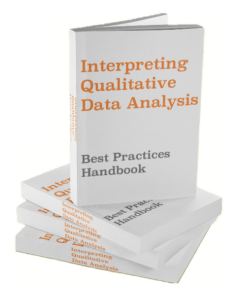The 10, 5, 3 rule says the annual return rate on stocks is 10%, on bonds is 5%, and on cash is 3% when held for periods of 10+ years. For example, if you invest $100,000 evenly in stock, bonds, and cash today you will have after 10 years $185,553 and after 40 years $1,852,055. Self-directed investors use it to support asset allocation decisions, usually within a value investing approach.

Calculator
Nobody wants to do this all by hand. Here’s a calculator you can download and use. Just make sure to read through this article so you understand how the 10, 5, 3 rule works so you can apply it correctly.
Download Here
Requirements
It’s easy to read this rule once over and believe you cracked the code to getting rich, but that would be a mistake. There are a few requirements the rule needs to work.
- Long-terms (>10 years) are required. The reality of the market, especially for stocks, is volatile. That’s why it’s so difficult to beat Mr. Market in the short term. You initial investment will fluctuate up and down over time, but the overall direction is up. For bonds and cash, the returns are fixed, but for stocks you really have to wait it out. Don’t ever expect to invest in January and pull out 10% richer in December. It doesn’t work like that.
- Asset diversification key. The rule of 10, 5, 3 claims expected return rates for each security, but what it’s REALLY saying is that you will get the total balance increase when you invest in all three. Only investing in stocks will leave you too exposed, and only investing in savings will underperform. Altogether, you can expect strong results. That’s why this is an “asset allocation” rule.
- Security diversification is another key. Within each asset class, you must diversify your positions. For example, you should have an array of stocks from different industries and market cap sizes. This is a basic principle that applies to value and quality investing approaches.
- Bond and cash must compound annually. Some bonds and cash savings accounts do not compound annually because they promise a return over short or longer periods of time. This rule only applies to those with a compounding return yearly. For example, government bonds may be 6% today, but when they mature you will reinvest at a rate the government drops to 2%.
Below we’ll look at an approach that meets all of these rules.
Does it really work?
The success rate of the 10, 5, 3 rule depends on many factors, which is why it’s more of a guideline than a “rule.” To get an idea, I crunched the numbers.
Bonds
The current U.S. EE bond rate is 2.11%, compounding semi-annually. This means it has a yearly return of 4.27% (1+2.11% ^ 2) — just shy of the 5% rule. The current U.S. II savings bond rate is 6.89% compounding semi-annually, or 14% annually. These are just basic savings bonds.
So yeah, it’s definitely possible to get 5% on bonds with a simple mix over 10 years.
Savings Accounts
You can get high-yield savings accounts today for 4.75% and 4.00%. They usually have account minimums, however, or require you set up direct deposit with the account.
Again yes, it’s totally possible to lock in a 3% return on cash, though rates change over time with the prime rate (the rate the U.S. Federal Reserve sets).
Stocks
Let’s do some simple math. An annual return of 10% on stocks comes out to 159% after ten years. The best way to see if this is possible is to look at a lot of stocks and see how they performed over ten years. I pulled 724 stocks across 158 industries in 10 sectors.
The average overall return was 121.53%, which is below our 159% target. The maximum was 4,000% an the minimum was -100%. At the industry level, the maximum return was 809% and the minimum was -62%. At the sector level, the maximum was 216% and the minimum was 24%. At the same time, the S&P 500 is up 161% over 10 years, which is right in line with our 159% target.
This data suggests, again, that it’s possible to get a 10% return over ten years with a diversified stock portfolio.
Given the volatility in stocks, make sure you get a trustworthy app for your investments, ideally one that has news streaming directly in-app.
Cross Checking with the Rule of 72
A good gut check for our rule of 10, 5, 3 is the rule of 72. It states that you can estimate the number of years it will take to double an investment with annual compounding return by dividing 72 by that return. For example, stocks with 10% return would double in 7.2 years (72/10).
Let’s try it out. With 10% annual returns compounded 7.2 times, I get 198%, or 98% return. Keep in mind, however, that our 10% return estimate only works with 10 years of investment. This means you would do better than double your outlay because the rule of 72 requires few years.
Bonds would require 14 years to double, which is greater than our 10 year minimum so it works. You can use this tool to evaluate alternatives to the 10, 5, 3 rule on an impromptu basis.
Example Strategies
A simple strategy is to decide on an amount to invest and distribute it evenly across the three asset classes. Let’s imagine John Doe has $9,000 saved up. He decides to invest $3k in stocks, $3k in bonds, and $3k in a savings account.
#1 Download an Investing App
To buy stocks, John need at least one broker. There are many options supporting small investments. I use Robinhood and Acorns.
#2 Choose ETFs (or Hand Pick Stocks)
John could create his own portfolio of stocks by hand-picking them, but that would require a serious amount of investment and generally isn’t recommended for beginners. Exchange Traded Funds (ETFs) provide an easy way to automatically diversify John’s position.
He could use Robinhood or TD Ameritrade to screen and choose ETFs that look interesting for you. Alternatively, Acorns provides an automated ETF investment.
#3 Buy Bonds
As a US Investors John can purchase bonds directly from the US Treasury at TreasuryDirect.gov. The examples we looked at earlier are savings bonds.
#4 Get a High Yield Savings Account
John can get a HYSA from many providers. Our two favorites are SoFi (requires direct deposits of your paycheck) and CIT (requires minimum $5,000 deposit)
#5 Hold
This is the most important steps. The market ebbs and flows, but John must remember that over long periods of 10+ years, it trends upwards. Since you’re holding for the long run, it’s not a bad idea to get a portfolio management tool. At the very least it provides data backup to your broker platform.
Conclusion: should you use the 10, 5, 3 rule?
The rule is useful for investors who want a minimal amount of involvement in their portfolio, but not every day.
It can seem overwhelming to lock up your money for 10 years, but remember you can always liquidate (except for bonds which must be held minimum 12 months).
You’re in the driver’s seat, and if you’re in it for the long haul, asset allocation based on these returns is a viable approach.
Key Takeaways
- The 10, 5, 3 refers to expected rates of return on stocks, bonds, and cash, respectively
- These rates manifest when assets are held for a long time (10+ years)
- The rule works best with distribution across all three rather than weighting one over the others, such as stocks more than bonds and cash
- Diversification within each asset class improves results, such as a wide range of stocks as provided naturally in many ETFs
- Bond and cash accounts must compound annually for the rule to work — most do but some do not
- Stocks have the highest chance of disobeying the rate of return rule
Disclaimer: All Content on this site is information of a general nature and does not address the circumstances of any particular individual or entity. Nothing in the Site constitutes professional and/or financial advice, nor does any information on the Site constitute a comprehensive or complete statement of the matters discussed or the law relating thereto.

